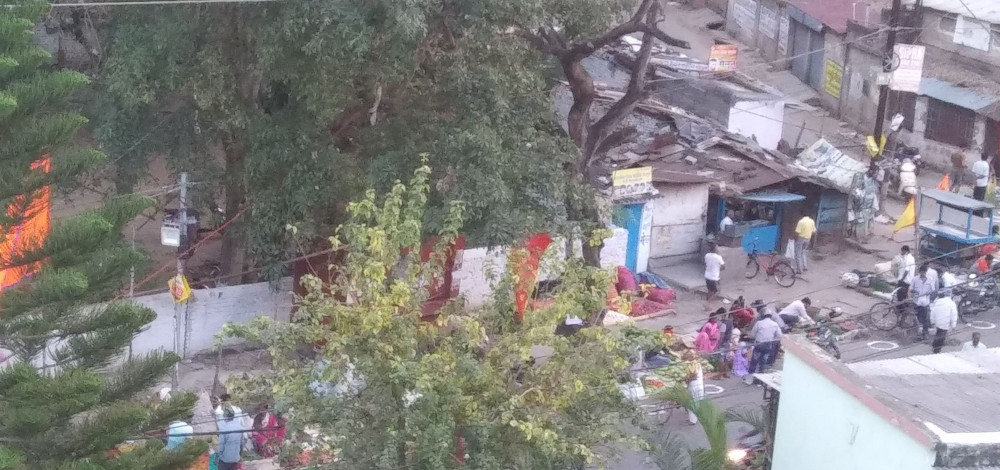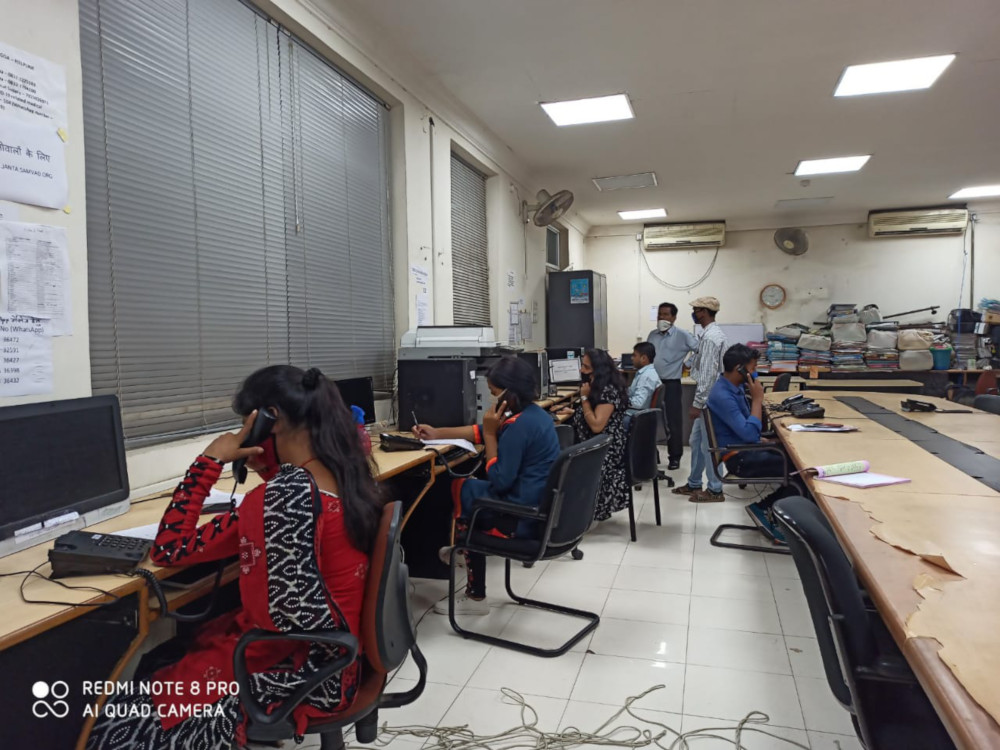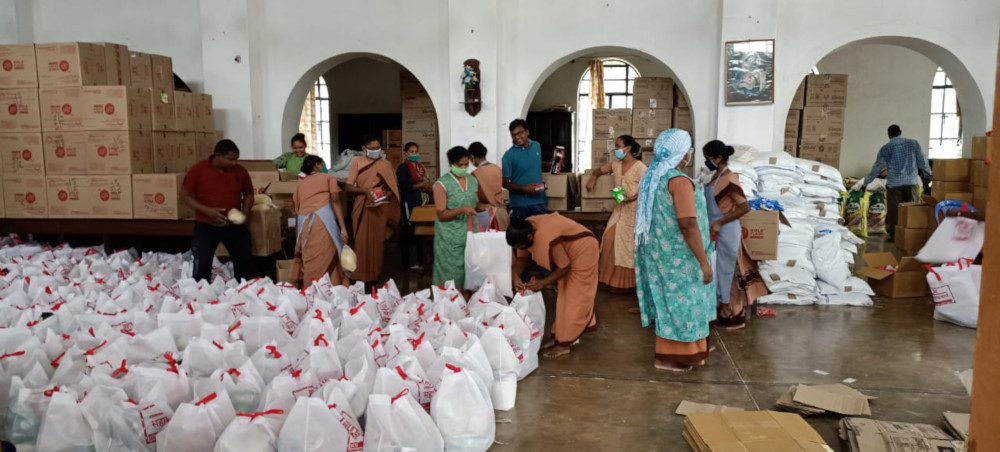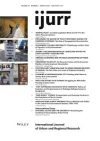It was 4 am in Ranchi, Jharkhand, India, on the morning of 2 April 2020, almost a week into India’s strict nationwide lockdown. It was still dark, and I had just sat through a Zoom call with a group of Ph.D. students from our US-based department in Eastern Standard time, each of us trying to gauge our funding situation and strategizing the next steps in a crisis that seemed insurmountable. Our university’s Institutional Review Board (IRB) had canceled all in-person research, and all travel and international fieldwork had been suspended. As urban planning and architecture researchers, many of our research grants were revoked or suspended, and we were simultaneously facing financial and career crises. The meeting had yielded limited results, and we planned to involve our program chairs for greater clarity and support. My colleagues in the US had started feeling the effects of isolation, and the conversation had turned into a mutual therapy session.
My own sense of self-pity was exacerbated by the fact that all my efforts across the last two years had met a sudden end due to an unprecedented global pandemic. I had planned to do year-long comparative research across the postcolonial cities of Ranchi in Jharkhand, India and Takoradi, Ghana. The research was to focus on informal indigenous markets and the impacts of formalization on them. I had arrived in Ranchi, India to start my fieldwork in February 2020. It had taken me a couple of semesters to prepare for this research trip. I had spent the last two summers conducting pilot research, and a considerable part of 2019 had gone towards defending my proposal and securing the necessary funds to conduct fieldwork. I was supposed to spend five months in Jharkhand and then travel to Ghana to conduct fieldwork for another six months. I had meant to observe the informal urban food markets, study their traditions, organization structure, and regional networks, and study the impacts of modern urban planning on these markets.

Informal market at Lalpur, Ranchi, India during Phase 3 (17 May 2020) of the national lockdown. Photo: Taru.
However, the national government of India placed a strict lockdown on the country starting from 25 March 2020. The announcement was made in the evening of 24 March, giving the country a notice of a few hours to prepare. This policy decision meant that I was stranded in Ranchi, inside my hostel, for the foreseeable future. It became clear that my fieldwork would have to be suspended, given the risks of the pandemic and the suspension of all in-person research by the University of Michigan. First, as researchers, it is our responsibility to do no harm, and the emerging science on COVID 19 indicated that any contact could be dire. Second, the stringent nature of the lockdown imposed in India made any movement next to impossible, limiting my own and everyone else’s ability to move outside one’s residence, including the market vendors and other actors I had planned to observe. My PhD committee had been incredibly supportive, as had the university, but there was only so much that they could do in this situation. At that moment, with national policies shifting weekly and the rising global death toll, all seemed bleak. How did one negotiate such uncertainty?
I heard a couple of mini trucks drive in on the road in front of my hostel and peeked out of the small window in my room. It was still dark outside; the orange light of a street lamp framed the silhouette of several people unloading sacks and cartons into the street. I was intrigued by the events unfolding outside. This was Scott’s “Weapons of the Weak” (1985) and Simone’s “People as Infrastructure” (2004) in action – the markets had found a way to survive the state and the pandemic. Vendors set up mobile stores at large distances, extremely alert to the police clearance vans. A couple of vendors used the columns of an underutilized building and the tree across the street as visual obstructions. They would conceal the makeshift store and hide behind the foliage cover to cut off the direct view from the road. A few local customers trickled in over the next hour. Around 5.30 am a police van patrolled, broadcasting a loud announcement about the pandemic and the lockdown. The people and the customers cleared out of their visual range— though I have a hunch that the age-old traditions of extra-legality and street-level bureaucracy would have played a role in how the police would treat them if they got caught. It was early days in the lockdown still, and with the amount of fear that spread about the pandemic, there had been multiple reports of public beatings and shaming by the police to enforce the curfew. After the police vehicle had completed its patrol, people came out again. This camouflaged market continued until 7.00 am. Around 7.30 am, when the police made its next round, the vendors and the buyers had all disappeared, leaving eerily empty streets in their wake.
As I watched the food market in front of my house return underground, the realization that the lockdown, as well as the pandemic, would take a disproportionate toll on the poor of the country solidified in my mind. I wondered if I could do more in my capacity as an urban planner, practitioner, and scholar. The media was inundated with images of desperate migrant workers fleeing from the country’s megacities and industrial centers. They walked or bicycled across several hundred miles, carrying their children and elderly, to their native villages. Many of these migrant workers were the poor citizens of impoverished states like Bihar, Uttar Pradesh, and Jharkhand, who had moved to the city to secure a better livelihood and future. Most of the workers were employed as contract workers or daily-wagers in a range of industries and lost their jobs and thus their ability to eke out a subsistence in the wake of the lockdown. The media covered a mass exodus from megacities like Mumbai and Delhi, but I wondered about the conditions within Jharkhand.
That morning I reached out to one of my activist friends to see if I could support grassroots initiatives towards survival. They directed me to the Jharkhand State Control Room (JSCR), which was a state-based, civil society-run hybrid institution supported by indigenous networks and traditional institutions. It was created to address the migrant crisis and ameliorate the effects of the lockdown on the urban poor. In the first few weeks of the lockdown, the JSCR had built an alliance with approximately 200 NGOs across India, through which they could reach and direct aid from most of the regions in the country. The entire setup was deep democracy (Appadurai 2002) and institutional hybridity (Skelcher and Smith 2015) in action – and would in the first four months of the lockdown register and aid more than a million migrants from Jharkhand.

Jharkhand State Control Room (JSCR), Helpline working 24×7 during the National lockdown, Ranchi, Jharkhand, India. Photo: JSCR Team.
I worked with the JSCR and aligned grassroots workers as one of the GIS analysts and reporters from April to September 2020 in Ranchi and continue to work remotely for them as and when necessary. One of my main tasks was to write the daily reports from the Control Room to the Chief Minister’s office and certain identified nodal officers. To do so, I summarized the nature of the phone calls and highlighted critical cases that required urgent intervention and policy suggestions that could be ascertained from them. I read through the call summaries, spoke to the callers and team leaders, and put together a summary daily. On other days, I would assist with statistical analysis or plot GIS maps to run cluster analysis and provide insights on how the trains must be planned. My colleagues knew I was a researcher and actively encouraged me to document their and my own experiences as our work unfolded. They wanted this story written to highlight the struggles of the migrant workers and to acknowledge their own, often heroic, efforts to help others during this crisis. “Write a book about this,” a colleague said to me, “when everyone stayed home, we served.” I encouraged them to log their own experiences – “I will come to you when I write that book.”

On-ground efforts to provide to the urban poor at Ursuline Convent, Ranchi, one of the centers where various religious, state, and civil society-based organizations came together to do relief work. Photo: Taru.
Even now, though I have returned to the USA, I continue to volunteer some of my time towards writing impact reports and running statistical analyses that might shape JSCR actions. My committee believes that this is an important story, and I have changed direction to write about this on-the-ground effort towards disaster management for my dissertation. I will go back to my half-finished previous project when the time is right and when I can do the fieldwork necessary to do that topic justice.
Many of my conversations in academic circles have been on how the pandemic has limited our ability to conduct embedded research. I have seen several social media posts among scholars who conduct human-centered research on adapting research designs during this time. I have also attended seminars and workshops and read several documents that explore how such research can be flexible and adapted by integrating alternative methods. Others have sought to change their research methods to use more accessible methods like digital ethnography and data mining. In keeping with the times, I adapted my current research project towards the heavy use of phone-based interviews, phone-based surveys, and statistical analysis of state data. I have also followed plural initiatives from several departments – where academics used their expertise (like 3-d printing masks or designing spatial tools) to ameliorate the pandemic’s effects. All the initiatives I heard about were very people-driven and institutionally supported. And perhaps, that was the nature of this pandemic – many of us could mostly contribute by staying isolated and working in bubbles. What made me pause was how little we talked about our roles and our ability to contribute to society in such a crisis. I wondered if we were actively noticing and documenting our efforts as experts in place as we engaged with and tackled this pandemic.
The year 2020 has forced me to rethink the role of planning and policy scholars, especially PhD students, in academia. I am compelled to ask myself about the extractive roles academics play during our research: extracting data, publications, and privilege from our work with local communities, especially the global poor. Many graduate students have faced exacerbated economic precarity this year, and the pandemic has only increased our sense of isolation. However, we also occupy the privileged position of having relevant skill sets and access to resources that most of the communities we work with need and cannot afford. Even limited access to these resources and skill sets could make a substantive difference to these communities and provide insights towards better decision making and governance. I understand that most of us are stretched thin – with several demands on our time. Imagining alternative subversive ways to conduct insurgent research could mean that we see ourselves embedded within the deep democratic networks and contribute to strengthening and legitimizing the self-organizing and survival mechanisms adopted by the communities. Perhaps then we should ask ourselves whether our prioritized contributions can lead to an immediate tangible benefit to the communities we live, work and research in. In these times of crisis, are we not duty-bound to do as much as we can and more?
My experience working with the JSCR has convinced me that we can play constructive roles as academics, act as resources, and advocate for the most vulnerable. It also brought home to me that even though I am not a frontline worker, I can still do my part to alleviate the ravages of the pandemic. Planning research often reflects the struggles of the times we live in, and we can only do this work justice if we engage with these struggles as humans first, with empathy and care.
Taru (Twitter) (Email) is a PhD student at the Department of Urban and Regional Planning at the University of Michigan. Her research is centered around procedural planning in the face of pluralism and structural conflict, especially in postcolonial cities. Her dissertation looks at the issues of urban precarity and migration in emerging cities. Further, it explores the role institutional hybridity and capillary power play during the pandemic and related disaster response.
All essays on Becoming an Urban Researcher During a Pandemic
Introduction: On Urban Field Research During a Pandemic
Liza Weinstein
Proximity and Distance: Navigating a Field of Tension in Urban Qualitative Research on the German Far Right During COVID-19
Gala Nettelbladt & Leon Rosa Reichle
Doing Fieldwork in Informal Settlements in Buenos Aires Metropolitan Area During the Pandemic
Francesca Ferlicca
What are Cities like when Affective Encounters Change?
Hang Wei
Hope in Action – Responding to the Pandemic as Researcher-Activists?
Taru
Credence, Chlorine and Curfew: Doing Ethnography Under the Pandemic
Sara Nikolić
More Haste, Less Speed: Experiences of Conducting Doctoral Research During a Pandemic
Alison Pulker
“Stay at Home”: Navigating Urban Research and Fieldwork During a Pandemic
Angana Banerjee
The Complex Production of Urban Research During the Covid-19 Pandemic
Safa H. Ashoub
The Hammer and the Dance of Urban Research During a Pandemic: Waves of Despair and Hope (A PhD’s diary)
Tatjana Boczy
Related IJURR articles on Becoming an Urban Researcher During a Pandemic
Rethinking Urban Epidemiology: Natures, Networks and Materialities
Meike Wolf
Comparative Urbanism: New Geographies and Cultures of Theorizing the Urban
Jennifer Robinson
The Urban, Politics and Subject Formation
Lisa M. Hoffman
Who’s Afraid of Postcolonial Theory?
Ananya Roy
The Urban Question as Cargo Cult: Opportunities for a New Urban Pedagogy
Rob Shields
The Comparative City: Knowledge, Learning, Urbanism
Colin McFarlane
© 2021 THE AUTHOR. INTERNATIONAL JOURNAL OF URBAN AND REGIONAL RESEARCH, PUBLISHED BY JOHN WILEY & SONS LTD UNDER LICENSE BY URBAN RESEARCH PUBLICATIONS LIMITED
This is an open access article under the terms of the Creative Commons Attribution-NonCommercial-NoDerivs License, which permits use and distribution in any medium, provided the original work is properly cited, the use is non-commercial and no modifications or adaptations are made.
